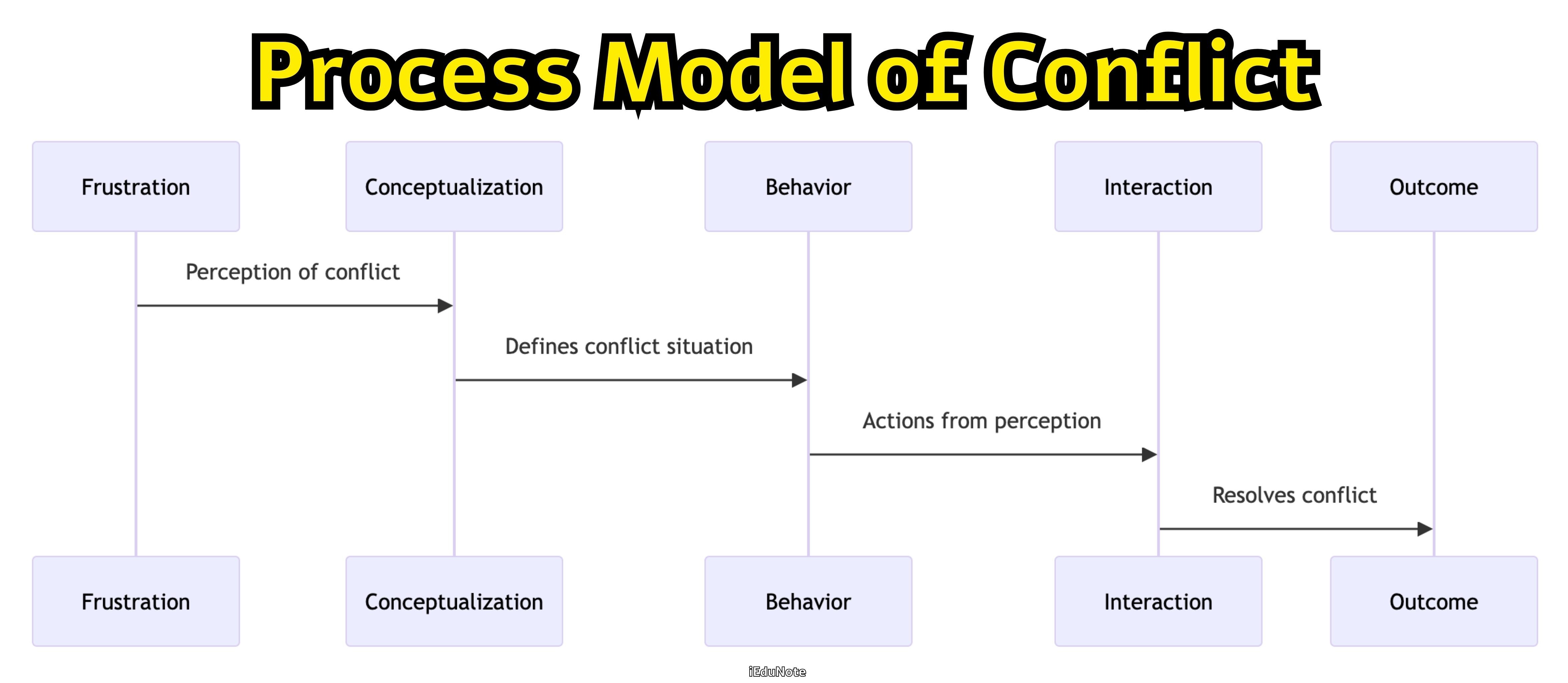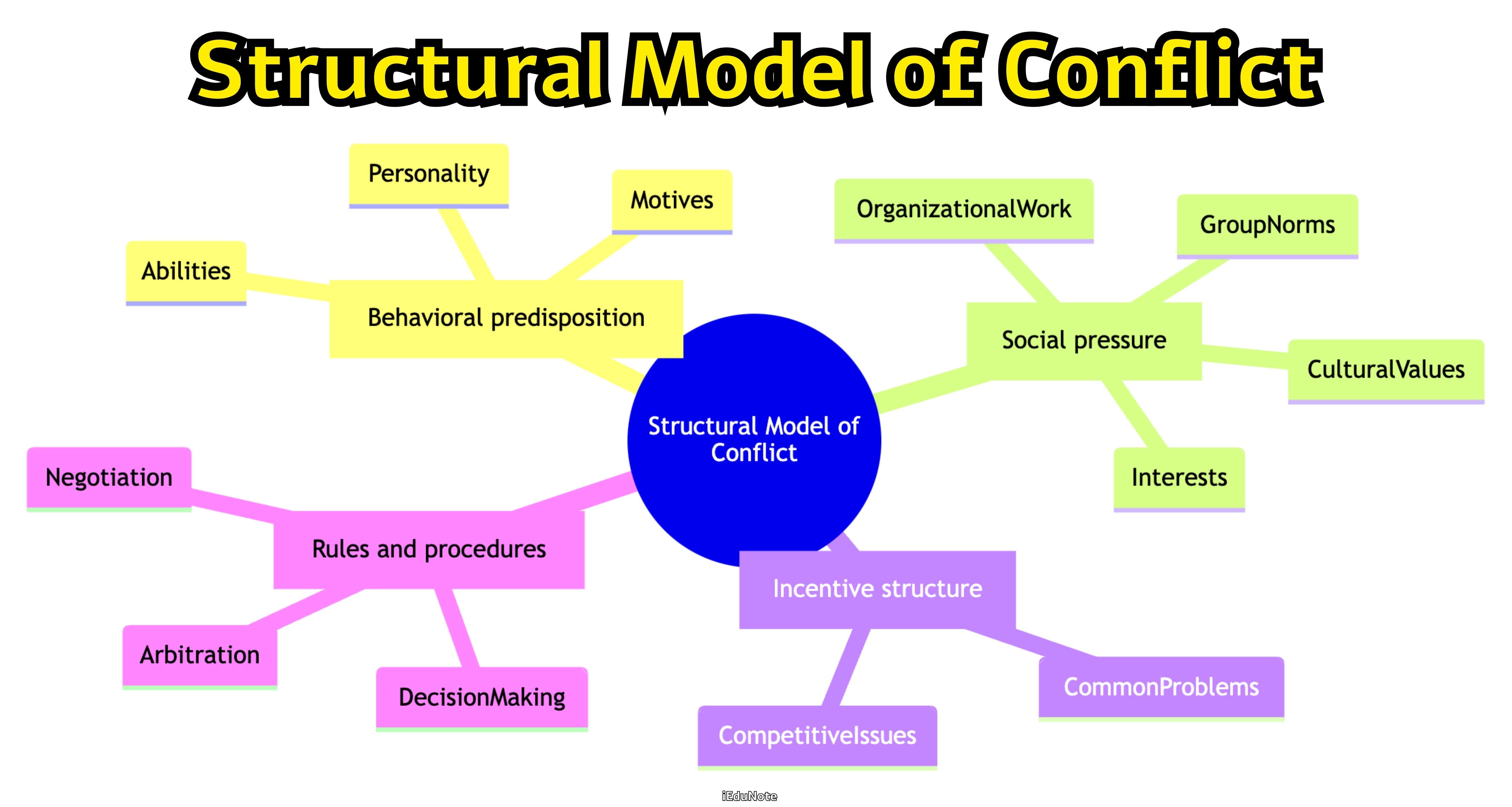Models of conflict help us understand the processes and factors involved in a conflict episode. Researchers on conflict highlight two modes: the process and structural models.
Process Model of Conflict

The process model views conflict between two or more parties in terms of the internal dynamics of conflict episodes. The conflict process follows five stages occurring sequentially, one after the other. They are as follows:
Frustration
It arises when one party perceives the other party as interfering with the satisfaction of their needs, wants, objectives, etc. There are three factors precipitating the condition for conflict in the frustration stage.
Communication
Poor communication arises from semantic difficulties, misunderstandings, and ‘noise’ in the communication channels.
Structure
This includes variables like size, degree of specialization in the task assigned to group members, jurisdictional clarity, member-goal compatibility, leadership styles, reward systems, and the degree of dependence between group influence and conflict conditions.
Personal variables
These include individual value systems and the personality characteristics that account for individuals’ idiosyncrasies and differences [20].
Conceptualization
This stage focuses on the way each party understands and perceives the situation. The parties involved define the conflict situation and the salient alternatives available, which, in turn, affect the behavior of the other party.
Behavior
Here, one can observe the actions that result from the perception of conflict that influences the behavior of each party. These influences affect the results in three areas: the orientation in handling conflicts, the strategic objectives that match with orientation, and the tactical behavior to achieve the objectives set.
Interaction
The interaction between the two parties either escalates or de-escalates the conflict.
Outcome
When conflict ceases, we see the results that range from agreement to long-term hostility.
The process model is generally supported in literature; however, the last two stages, interaction, and outcome, can be combined into one stage.
Structural Model of Conflict

The structural model identifies the parameters that shape the conflict episode. There are four such parameters as described below:
Behavioral predisposition
This includes one party’s motives, abilities, and personality.
Social pressure
The pressure arises from cultural values, organizational work, group norms, interests, and so on.
Incentive structure
The objective reality gives rise to conflict viz conflict of interests in competitive issues and common problems.
Rules and procedures
This parameter includes the decision-making machinery, i.e., decision rules, negotiation, and arbitration procedures, which constrain and shape the behavior of those conflicting parties.
To summarize, the above models suggest that conflict can be defined as an interpersonal dynamic that is shaped by the internal and external environments of the parties involved, and this dynamic is manifested in a process that affects group performance, either functionally or dysfunctional.